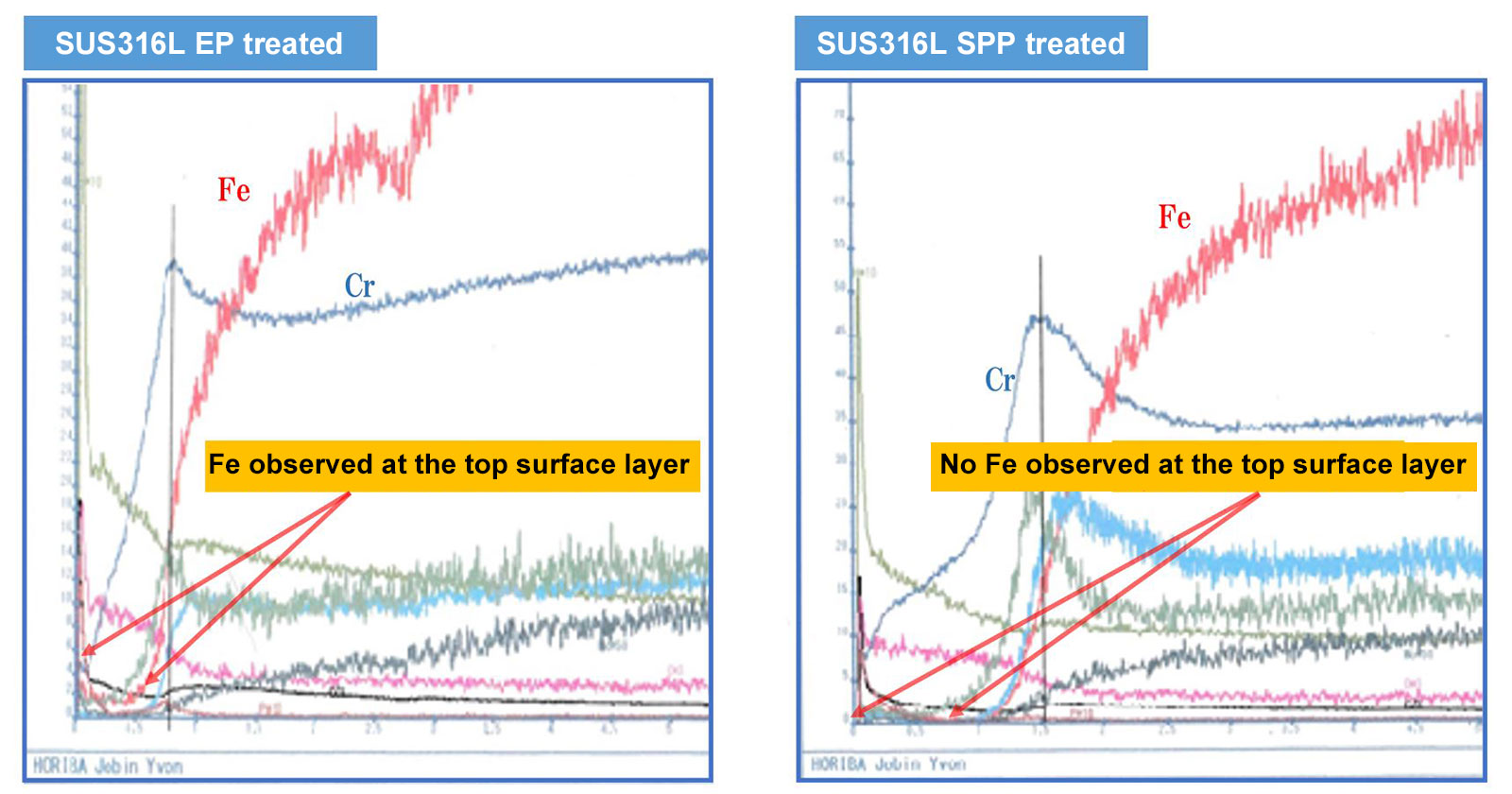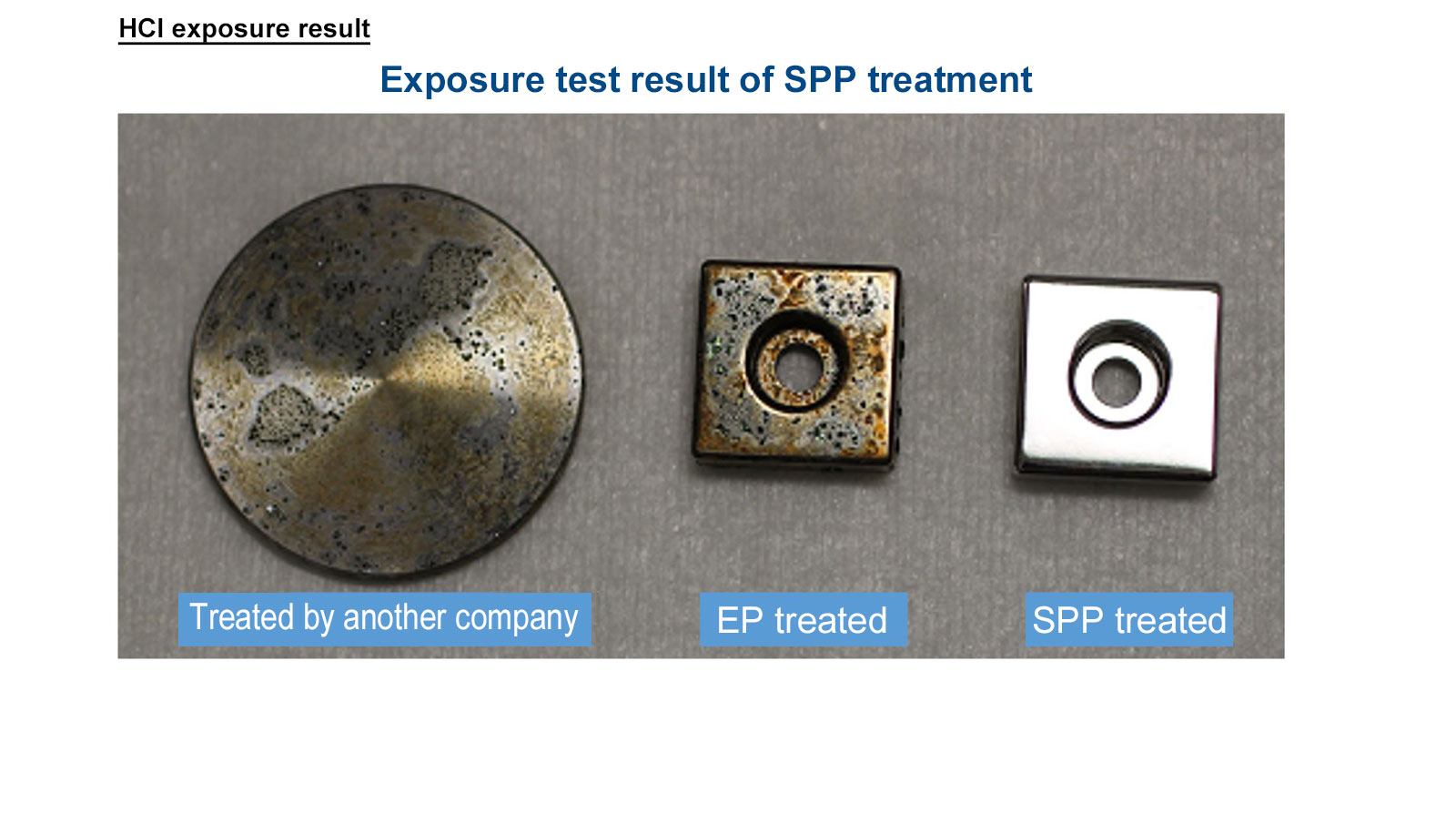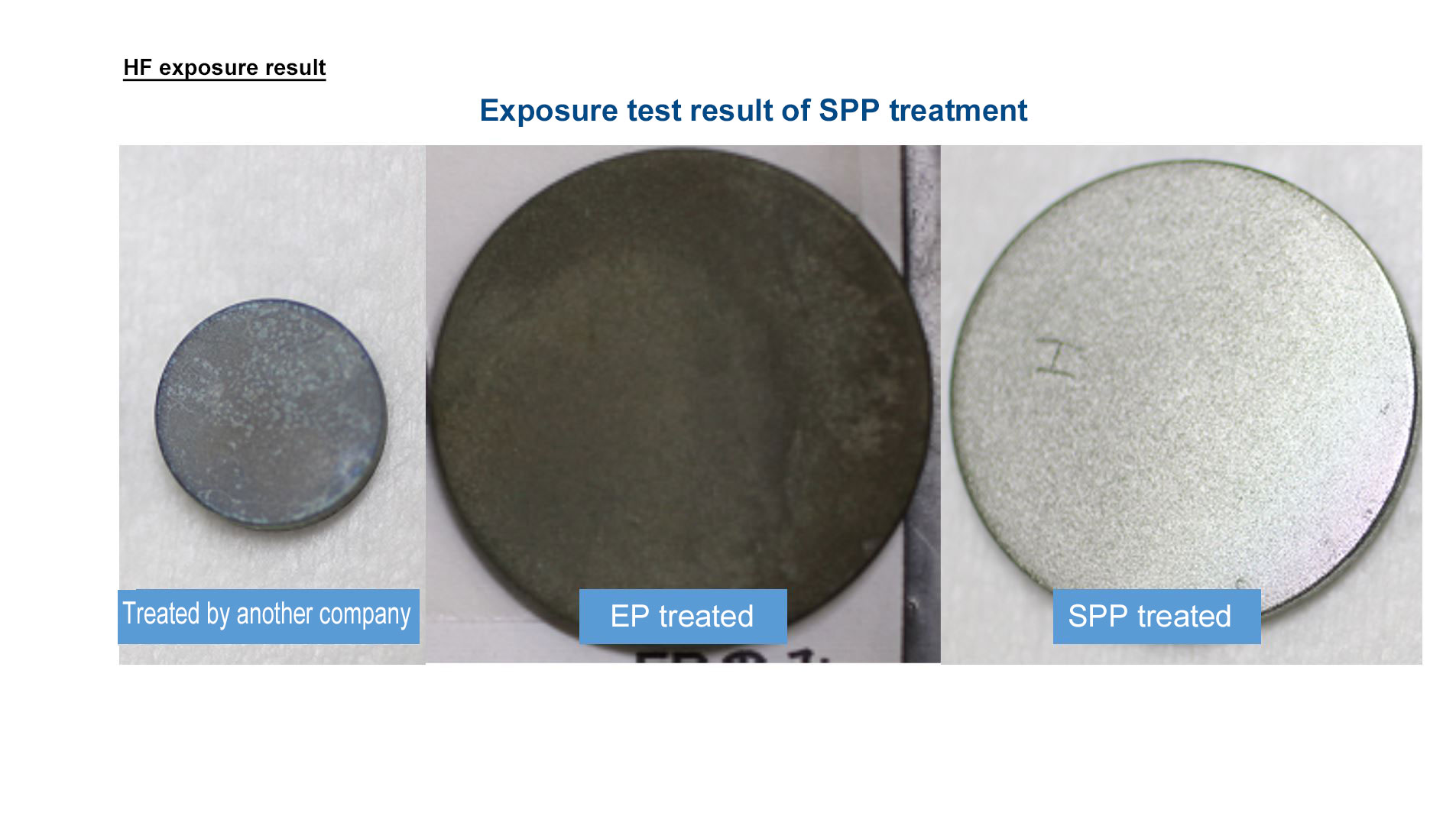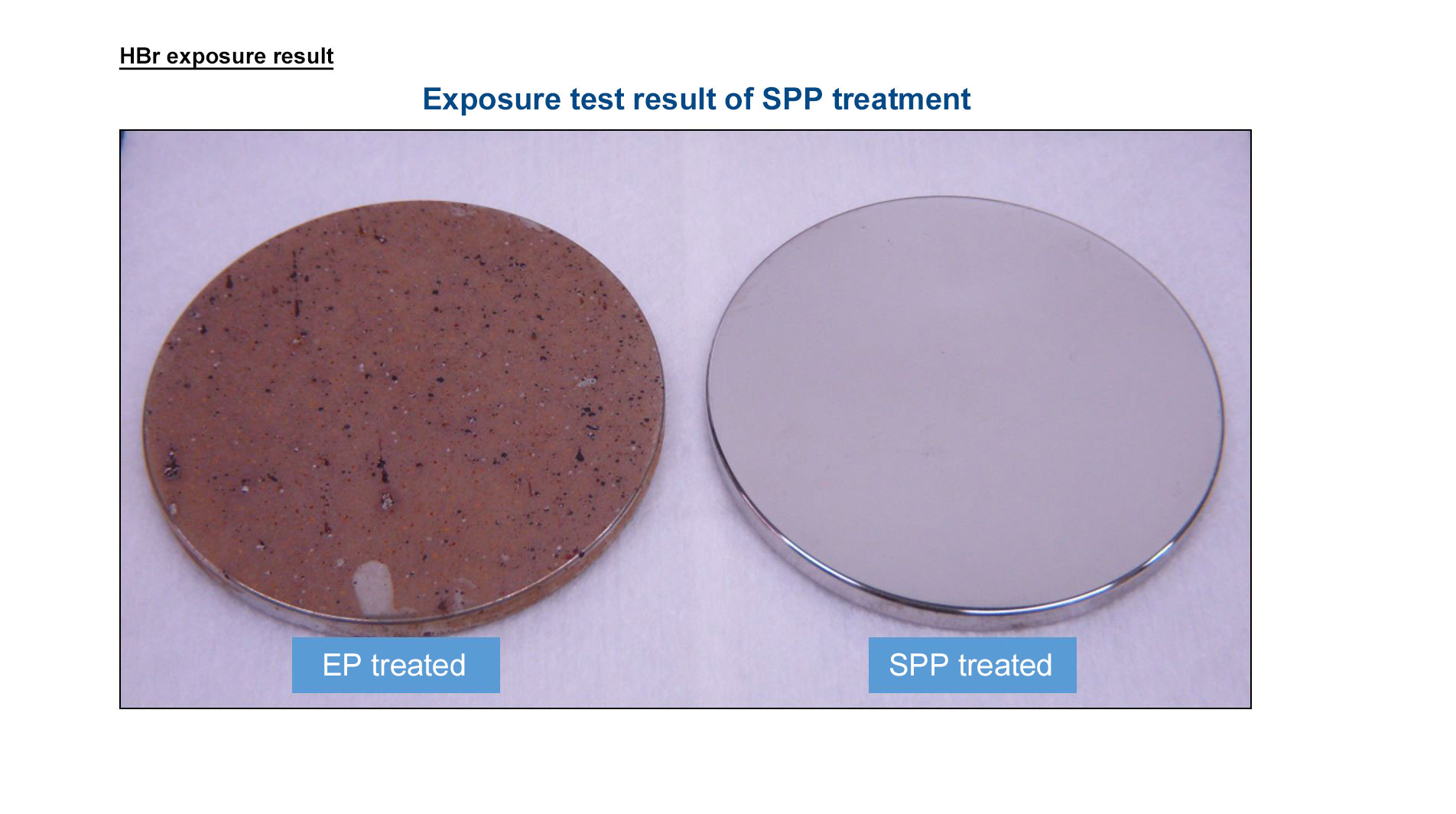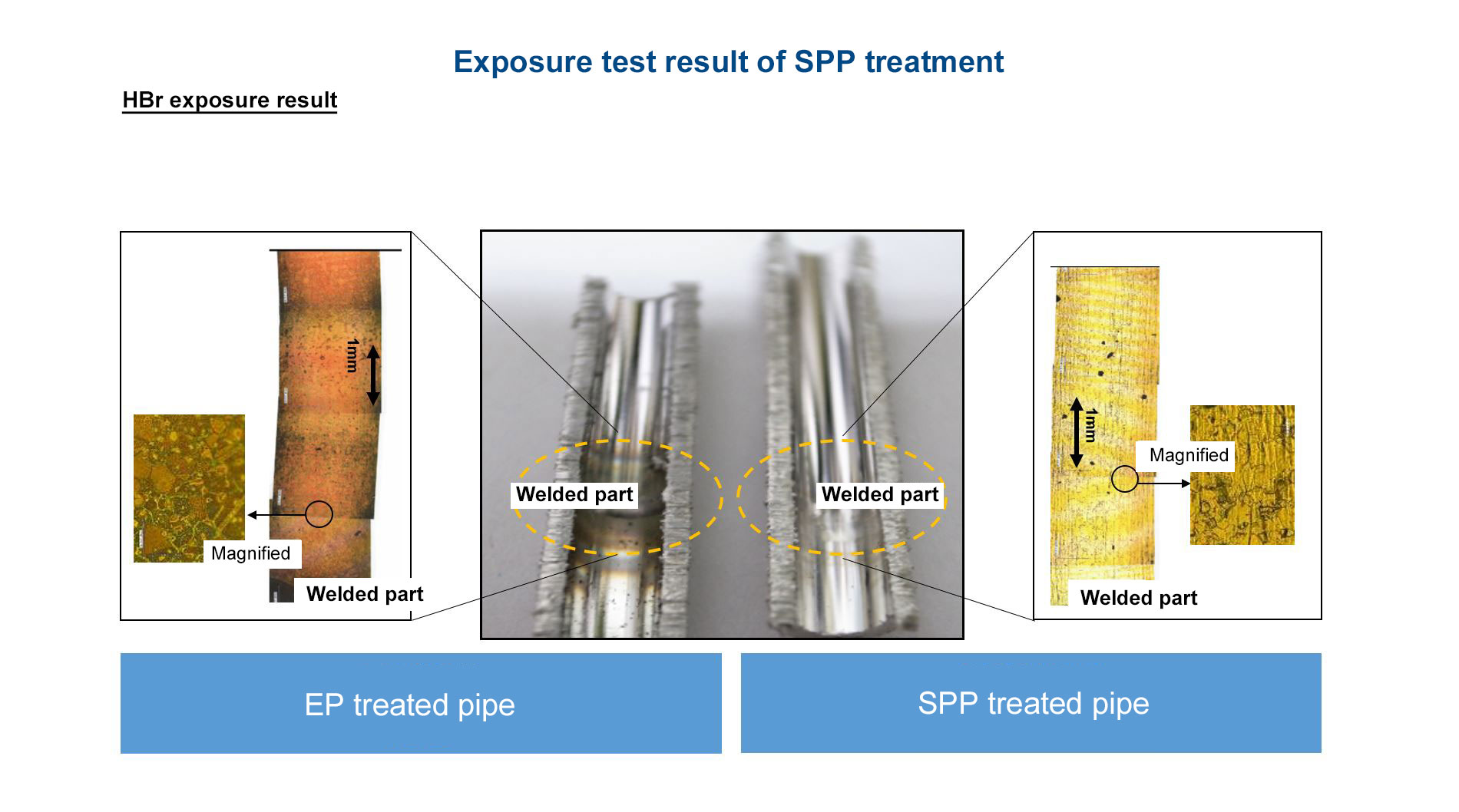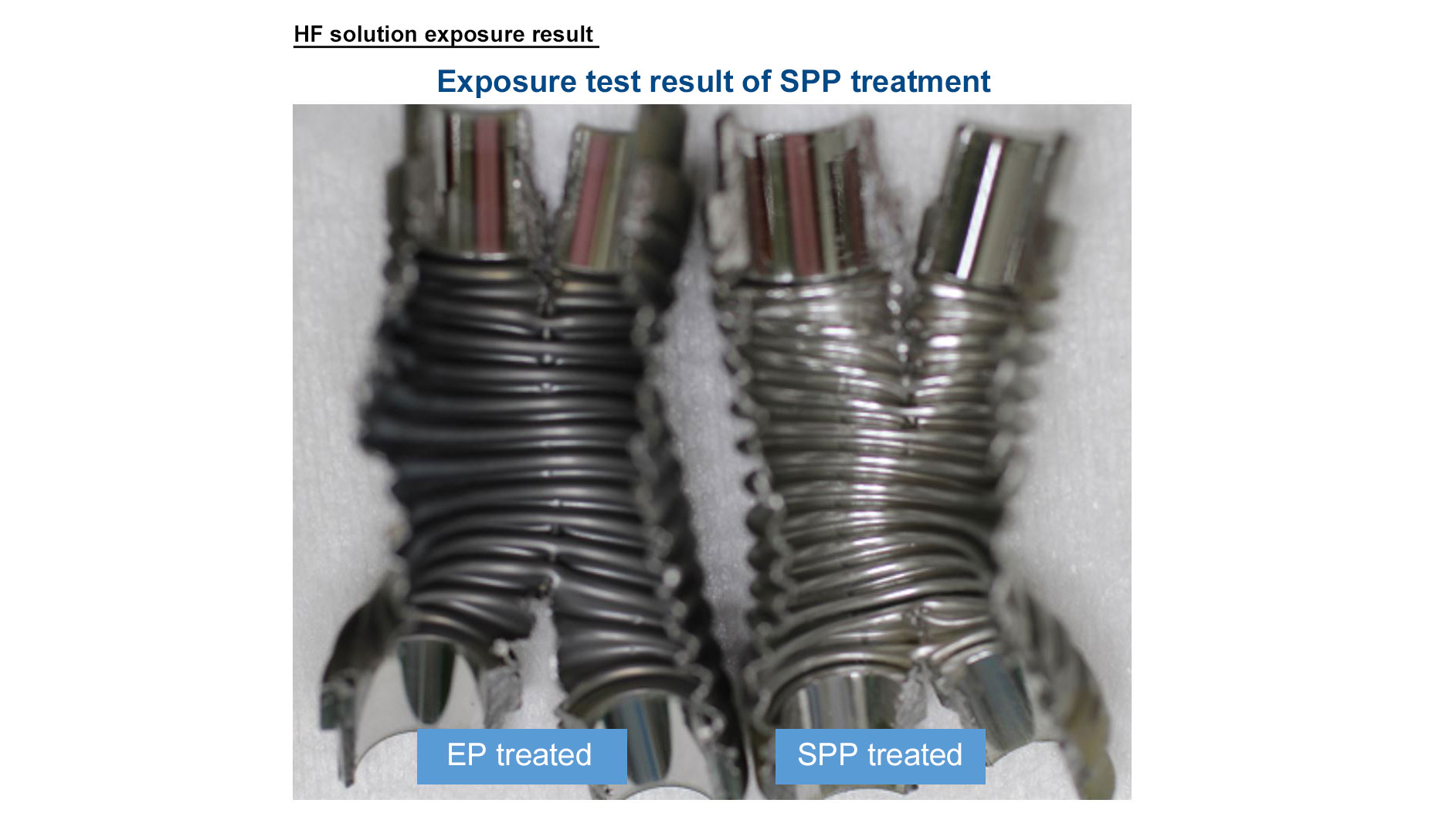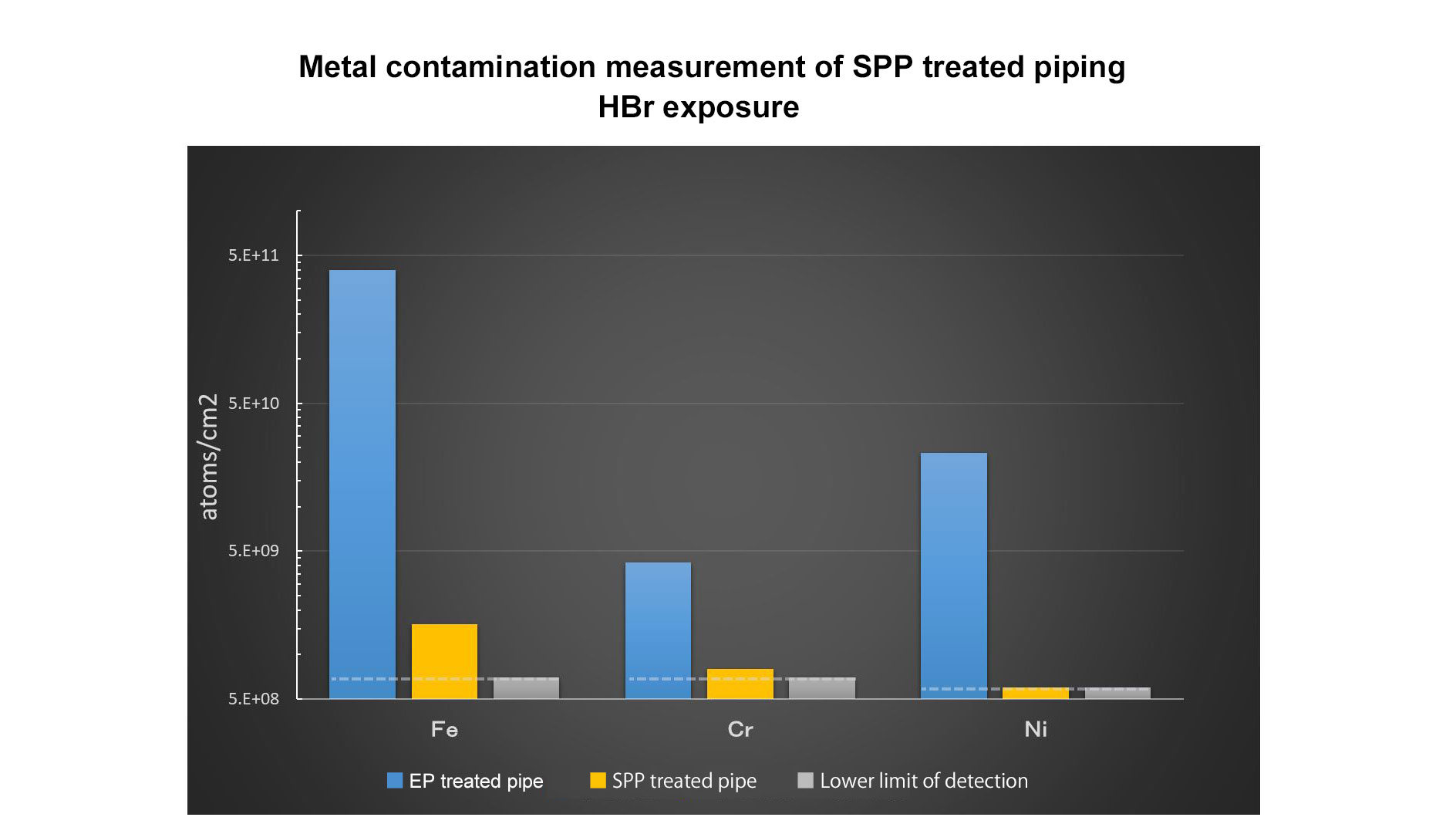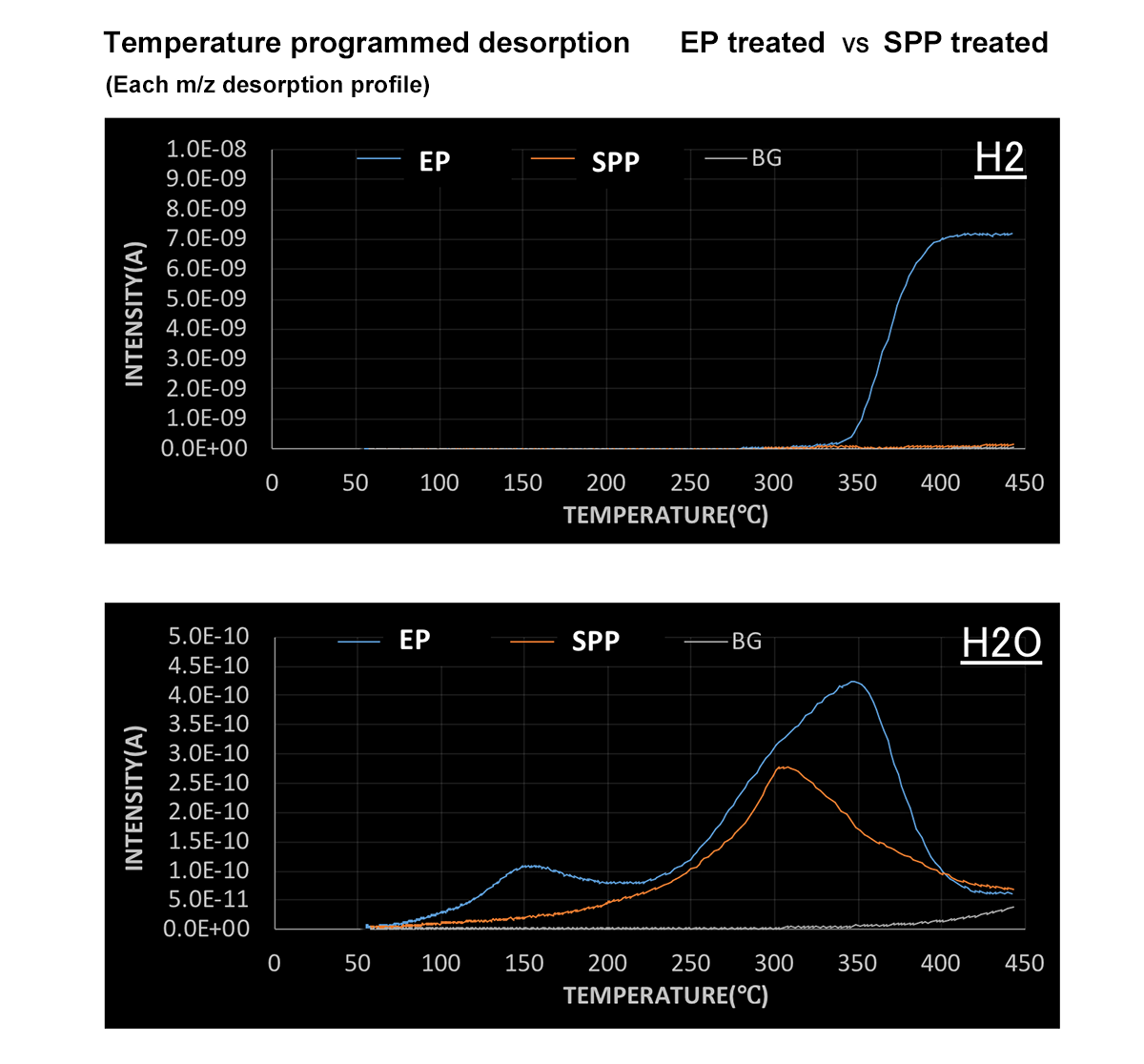SPP Treatment
Outline
SPP=Super Passivation Process
- The surface modification of stainless steel helps form a dense Cr2O3 film with no defect at the top surface layer.
It provides excellent corrosion resistance to halogen gas such as hydrofluoric acid or hydrochloric acid , and enhances vacuum characteristic.
The surface modification of stainless steel has revealed a variety of phenomena that were not common to the steel.
It is a promising technology in the future fields of hydrogen infrastructure and ultrahigh vacuum.
Effect
- Countermeasures to corrosion and metal contamination, reduced gas emission
Applications
- Primary piping, valves, MFC, regulator parts, chambers, and chamber peripheral parts
Material Data
■ SPP treated surface examples observed by FE-SEM showing nanoparticles of chromium oxide
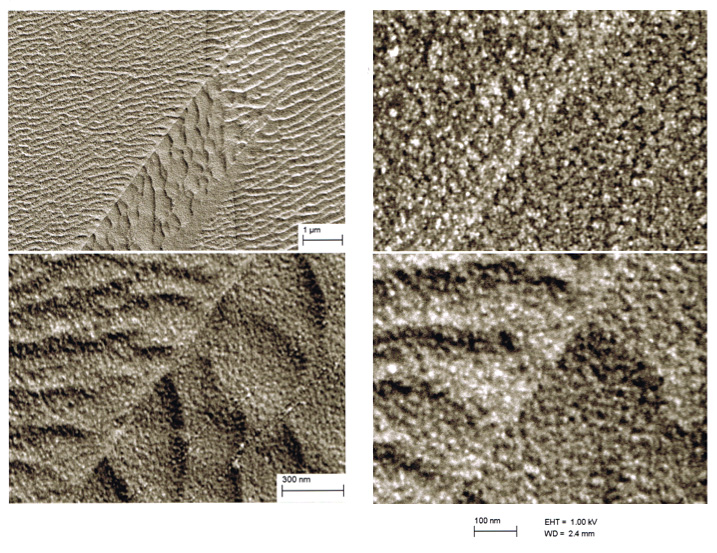
Photographed by Emeritus Professor Shimizu of Keio University
■ SUS316L EP treatment vs SPP treatment GDOES analysis example
■ Exposure test result of SPP treatment
HCl exposure result
HF exposure result
HBr exposure result
HBr exposure result (piping)
HF solution exposure result
■ Metal contamination measurement of SPP treated piping
HBr exposure
■ Temperature programmed desorption of SPP treated piping
List of Our Solutions
| Product Name |
Feature |
Film Material |
Film Thickness |
Heat Resistant Temperature |
Corrosion Resistance |
Effect Example |
Silica Coat
Quartzace |
Coating of metal surface with high-purity SiO2 equivalent to synthetic fused silica realizes metal contamination free surface. |
SiO2 |
0.7μm |
350℃ |
HCl
HBr
etc.
※1 |
Prevention of metal oxidation at high temperatures Reduction of metal contamination |
| SPP Treatment |
Dense chromium oxide film formed on the surface of SUS316L provides excellent corrosion resistance even to HF and HCL. |
Cr2O3 |
40Å |
300℃ |
HCl
HBr
HF
F2
etc. |
Reduction of metal contamination |
*1 Not applicable to HF, F2, or other F based gas





